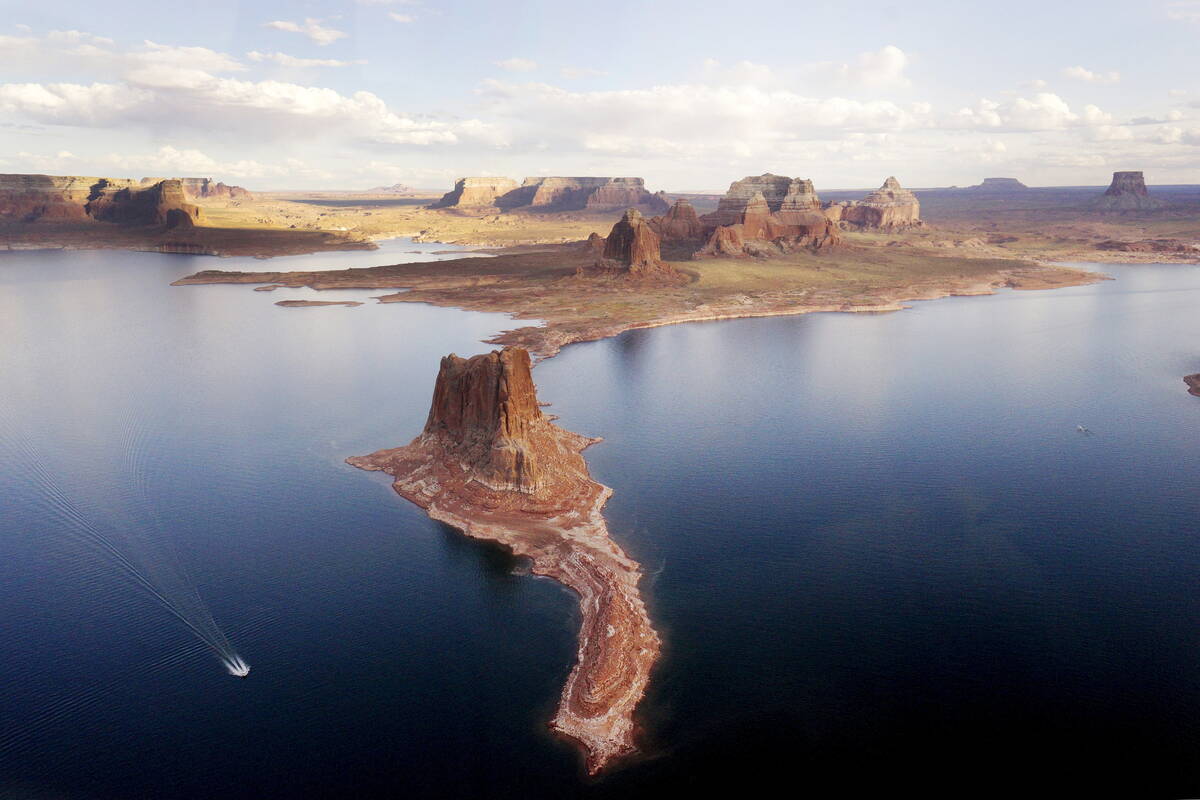COMMENTARY: States have a responsibility to set new guidelines for the Colorado River
When I returned from Washington state to Nevada after my wonderful retirement send-off, I was again reminded of my career on the Colorado River, working on water management issues as the executive director of the Colorado River Commission. I spent 15 years participating in the Western water world, watching as the system’s hydrology collapsed. I wondered if we were doing the right thing to improve the system’s efficiency to generate water, or if much more drastic steps needed to be taken to conserve water from an overallocated river system.
In 2007, the states and the federal government negotiated operating guidelines that were a good compromise for allowing water to be used as needed and recognizing the system’s state. Banking water in Lake Mead and adopting strong efficiency measures (especially in Nevada) contributed to peace along the river. This peace was interrupted over the last few years as these guidelines will expire in 2026. The system’s hydrology is worse today than when the original guidelines were approved.
I recall my first few weeks at the commission when I gained insight into the local politics of water management. I wondered how a community with the nation’s highest growth rate could manage with the smallest allocation of water from the Colorado. Our job was to find the water to support the growth.
In Southern Nevada, we converted our potable water system into a return flow system, where wastewater is treated and sent back to the lake, allowing us to divert additional water within our legal entitlement. We established policies to remove grass and other water-consuming vegetation that are unsuitable for a desert environment. We also initiated a comprehensive educational and communication strategy to promote water conservation. The Springs Preserve was a tremendously significant investment in our water-saving future. These efforts allowed us to grow and stay within the limits of water availability.
Now that we have done all that, what’s next? Can we continue growing when we have taken so many steps to increase our water consumption efficiency? What’s left to conserve?
Ever since the river’s allocation was fully utilized in the lower basin (California, Nevada and Arizona), the seven basin states have worked cooperatively, understanding that they could not simply cut water to cities, regardless of water right priorities. But these state perspectives have shifted, making compromise more difficult. The upper basin claims that the lower basin should take most of the shortage because it developed first, and the upper basin has not yet been designed to use its full allocation. The lower basin disagrees and believes that shortages should be shared equally.
In the 1920s, under the compact, the original allocations were made without a thorough understanding of the water supply. It yields much less than was believed back then. If the river were to be reallocated today, 100 years later, not only would the states receive less water, but the tribes and the environment would also have their rights acknowledged. And we cannot forget our treaty with Mexico.
The people negotiating the new operating guidelines are intelligent, sincere and devoted to their cause. There are no simple solutions to distributing or cutting slices of the water pie when the pie has become smaller. Given that people, farms, and fish must survive, how do we rebalance the system? And how do we achieve this through cooperation and not litigation?
So what can we agree on? Here are some ideas:
We all want a healthy river system for people, farms and fish.
The system we rely on has been overallocated.
Climate change will continue to affect the river’s hydrology, whether through less snowpack or changes in the timing of runoff.
Cities developed in the arid Southwest have thrived because water has been available. Depopulation is not a realistic or desirable option.
Each allottee from the river must take steps to conserve every drop of water. We need to act like the Fremen in Dune.
Regardless of who developed the fastest, all must share the river’s reduced hydrology. It makes no sense to believe that the original allocations were realistic.
Western water law may not be the proper framework for addressing the current system. First rights for agriculture must acknowledge that cities must have adequate water supplies.
Pricing of raw and treated water supplies may distort the adoption of new technologies to generate and conserve water.
The states must agree on guidelines to prevent federal or court-mandated imposition. A federal or court-mandated solution will be worse for all.
This will not be an easy task, but our responsibility is to get it right.
This will not be the last time guidelines will be adopted. A new group of water leaders will become the next generation of negotiators. A suggestion for the future is that, with new players, we should revisit the Colorado River system, whose destiny was set in the 20th century. This group should be assembled back in Santa Fe to work out an allocation system based on the latest hydrology.
Now that each allottee will have to conserve every drop of water, the allocation can be made with the caveat that each allottee establishes policies that curb water-related growth. That means cities and agriculture have strict ordinances. A fund could be established to encourage the development and adoption of new water-saving technologies. A price structure can be established that does not cause economic chaos while allowing for more innovation.
I hope for a sustainable Colorado River system that utilizes our best minds, judgment and resources for the benefit of our people, farms and fish.
George Caan served as executive director of the Colorado River Commission of Nevada from 1996-2011.

















